Packers’ Rookie Class Builds Solid Foundation
GREEN BAY, Wis. – For all but the Super Bowl-bound Kansas City Chiefs and Philadelphia Eagles, another NFL Draft cycle is upon us.
The Green Bay Packers will add 10 players to their roster, give or take, and those players will generate hype from the moment they’re drafted. However, the Class of 2023 won’t be the driving force behind a potential Packers rebound from this year’s 8-9 flop.
“I think in general, all NFL teams, they’re usually counting on their veterans and their young players to improve from Year 1 to Year 2, Year 2 to Year 3, to give you that push to improve as a football team,” general manager Brian Gutekunst said following last year’s draft.
“I think for all rookies in general, there’s a learning curve and it takes some time. It’s no different than football from high school to college. Usually, you see it sometime in the middle of Year 2 to the middle of Year 3 what you really have. I think that’s just normal in the NFL. You usually count on those second- and third-year players improving more so than you count on your rookie class.”
To that end, the Packers’ Class of 2022 built a solid foundation for their careers. While only one of the draft picks was selected to the official All-Rookie Team, five players logged at least 450 snaps on offense or defense. While there were teams that received more total snaps from their draft picks – the Seattle Seahawks had a league-high 5,074, or about 1,900 more than Green Bay – no team had more players hit that 450-snap threshold.
While it is practically assumed, that Year 1 to Year 2 improvement isn’t a given. There might not have been a member of the entire 2021 draft who regressed more than cornerback Eric Stokes, who gave up a 51.0 percent completion rate as a rookie but 84.0 percent before his 2022 season ended with an ankle injury.
Nonetheless, that cliched Year 2 jump will be a necessity for the Packers given their limited means to improving the roster through free agency.
Here is a look at Green Bay’s Class of 2022.
First round: Quay Walker

An All-Rookie selection, Quay Walker finished seventh among all rookie defenders with 81.9 percent playing time. He tied for seventh among rookie defenders and was first among linebackers with 16 starts.
Walker led the team with 119 tackles. Among all rookies, only Houston safety Jalen Pitre had more tackles. He stuffed the stats sheet with 1.5 sacks, five tackles for losses, four quarterback hits, seven passes defensed and a team-high three forced fumbles.
What was encouraging was Walker’s big-play production. At Georgia, he had zero forced fumbles and three passes defensed in his career. How could he make so few impact plays despite his elite combination of size and athleticism? Whatever. He did it as a rookie in the NFL.
According to Sports Info Solutions, he allowed just 9-of-18 passing for 43 yards, a paltry 2.4 yards per target. That was 1.2 yards better than any other linebacker who had more than 65 tackles.
The obvious blemish on his game, which won’t be fixed merely through the cliched second-year jump, is his temper. He was ejected twice – the only player to accomplish that feat since at least 2000. Somehow, he must find that fine line between playing with fire and setting himself and the team ablaze.
First round: Devonte Wyatt
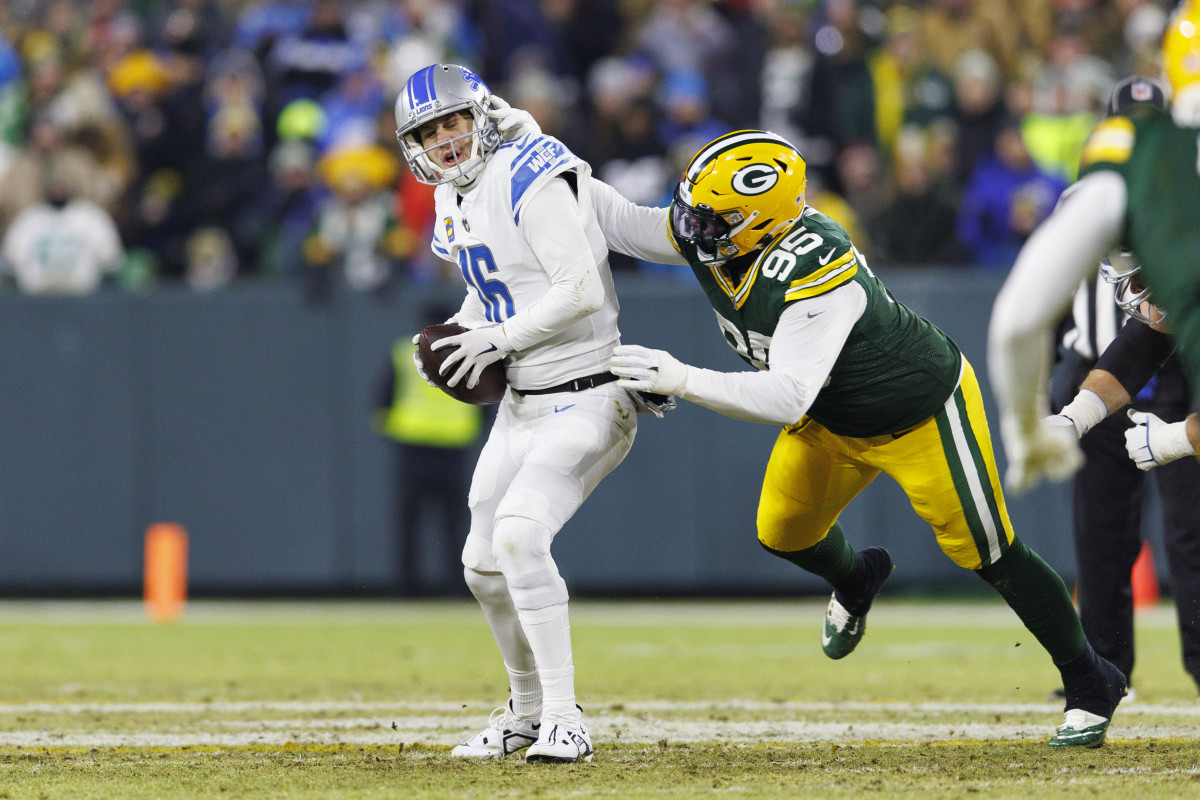
Wyatt wound up finishing 14th out of 16 defensive players taken in the first round with 224 snaps. He got snaps here and there until finally stepping into a larger role down the stretch with 24 snaps in Week 16, 34 in Week 17 and 32 in Week 18. Of his 16-game total of 15 tackles, 1.5 sacks, three quarterback hits and eight pressures, all the sacks and hits and five of the eight pressures came during the final four weeks.
Wyatt was the second defensive linemen off the board. He ranked 10th in snaps, 12th in tackles, fourth in pressures and tied for 13th in stops. He played 10 or fewer snaps in eight games. Not a lot was asked of him, which explains some of the lackluster numbers, but this is a bottom-line business and not a lot was produced, either.
With Dean Lowry and Jarran Reed set to hit free agency, the Packers might be banking on Wyatt to take a big step forward in Year 2.
Second round: Christian Watson
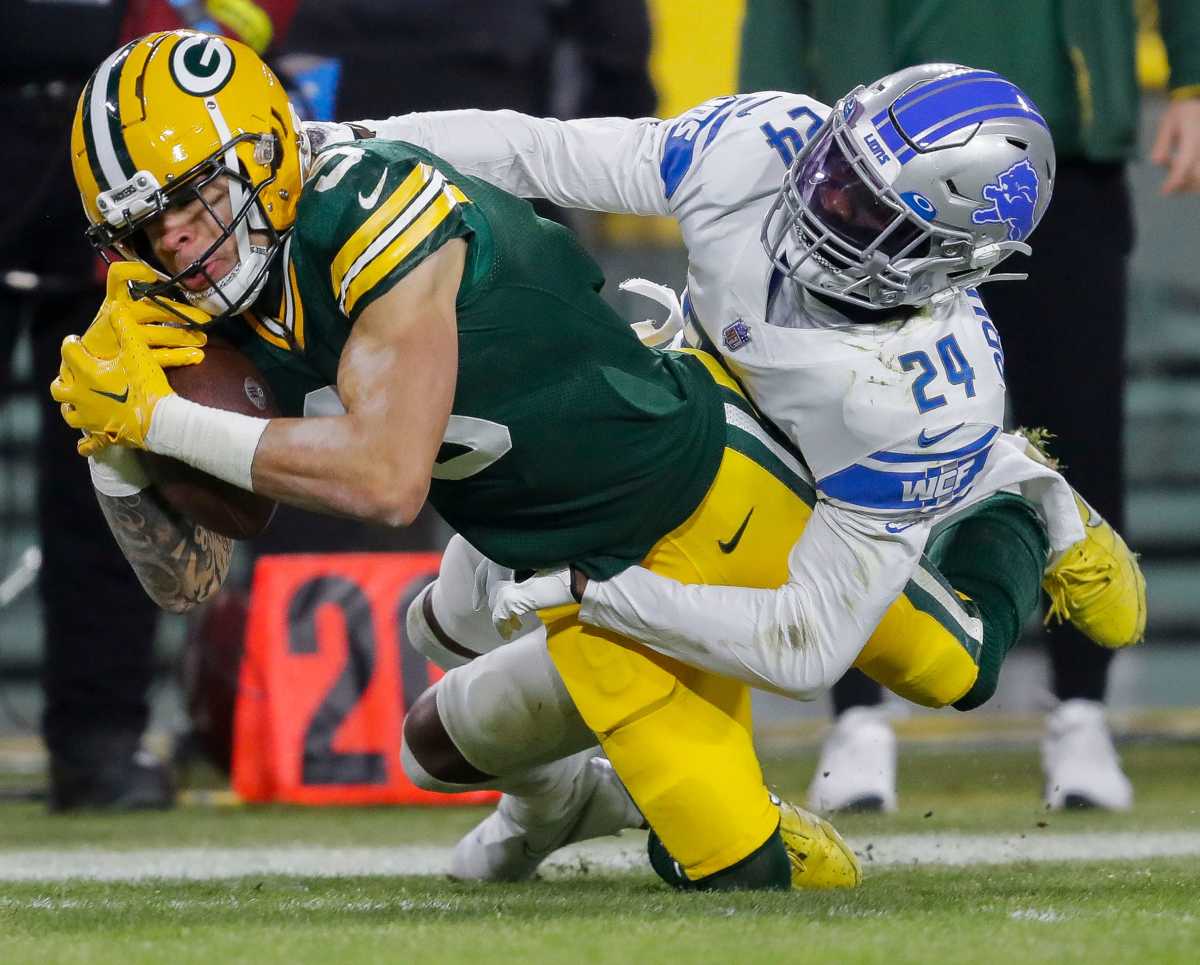
After six receivers were selected in the first round, general manager Brian Gutekunst shipped his two second-rounders to Minnesota to get Christian Watson at No. 34 overall.
Finally healthy after dealing with a bunch of injuries during the first half of the season, Christian Watson played 507 snaps. Among rookies, Watson ranked 10th in snaps but sixth with 41 receptions, fifth with 611 yards and tied for first with seven touchdowns. Among the rookies with at least 200 passing snaps, he was second with 2.26 yards per route.
It really was a tale of two seasons. After dropping two passes in Game 10 against Dallas, he rebounded and scored three touchdowns. He added two scores vs. Tennessee, one during a late rally at Philadelphia and the clinching touchdown run vs. Chicago to give him seven touchdowns in four games.
Nobody can play to that level over a sustained stretch. During the four-game winning streak, Watson failed to reach 50 receiving yards in any of the games. During the finale against Detroit, when the Packers really needed someone to rise to the occasion, Watson caught 5-of-6 passes for 104 yards and added two carries for 12 more yards. Big-time players rise to the occasion in big-time games. Watson looks like a big-time player – so long as he can stay on the field.
Third round: Sean Rhyan

Sean Rhyan had the worst season for any third-round pick in this year’s draft. Not for a moment did he push for playing time during training camp. Remember, the guys ahead of him on the depth chart were Royce Newman and Jake Hanson.
In all, with the addition of compensatory picks, 41 players were selected in the third round. Thirty players started at least one game, including 11 with eight starts. Thirty-six players saw action in at least eight games.
Rhyan played one snap on special teams. That’s it. He was one of three third-rounders with zero snaps from scrimmage; the others suffered season-ending injuries during the preseason. And if that wasn’t bad enough, he was suspended for the final six games for violating the NFL’s policy on performance-enhancing drugs. That’s about as bad a season as you can imagine.
Fourth round: WR Romeo Doubs
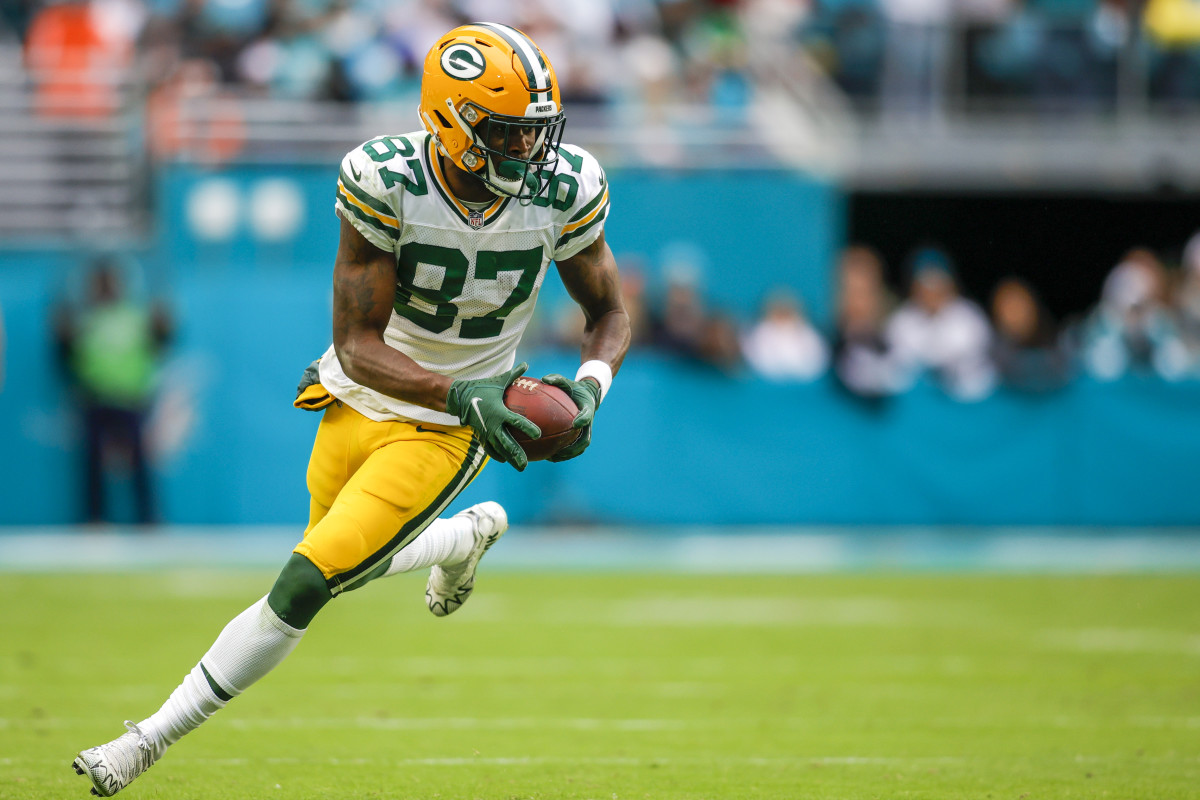
Doubs was the 19th receiver selected but one of the most productive. He finished the season with 42 receptions for 425 yards and three scores, the catch count ranking fifth among the rookie class.
From Round 3 through Round 7, 15 receivers were drafted. Doubs had 18 more receptions than anyone (Cleveland’s David Bell had 24) and seven more receptions than the other six receivers selected in the third and fourth rounds combined.
In his first eight games, he had four-plus receptions in five games, five catches of 20-plus yards and three touchdowns. An ankle injury sustained at Detroit in Week 9 changed his fortunes. After a four-game stint on injured reserve, Doubs caught 11-of-17 passes for 112 yards and zero touchdowns in the final four games. He dropped both opportunities in the finale vs. Detroit, though neither was an easy play.
Of his catches, 31 were within 9 yards of the line of scrimmage – including 11 behind the line. He forced only one missed tackle on those catches.
Fourth round: Zach Tom
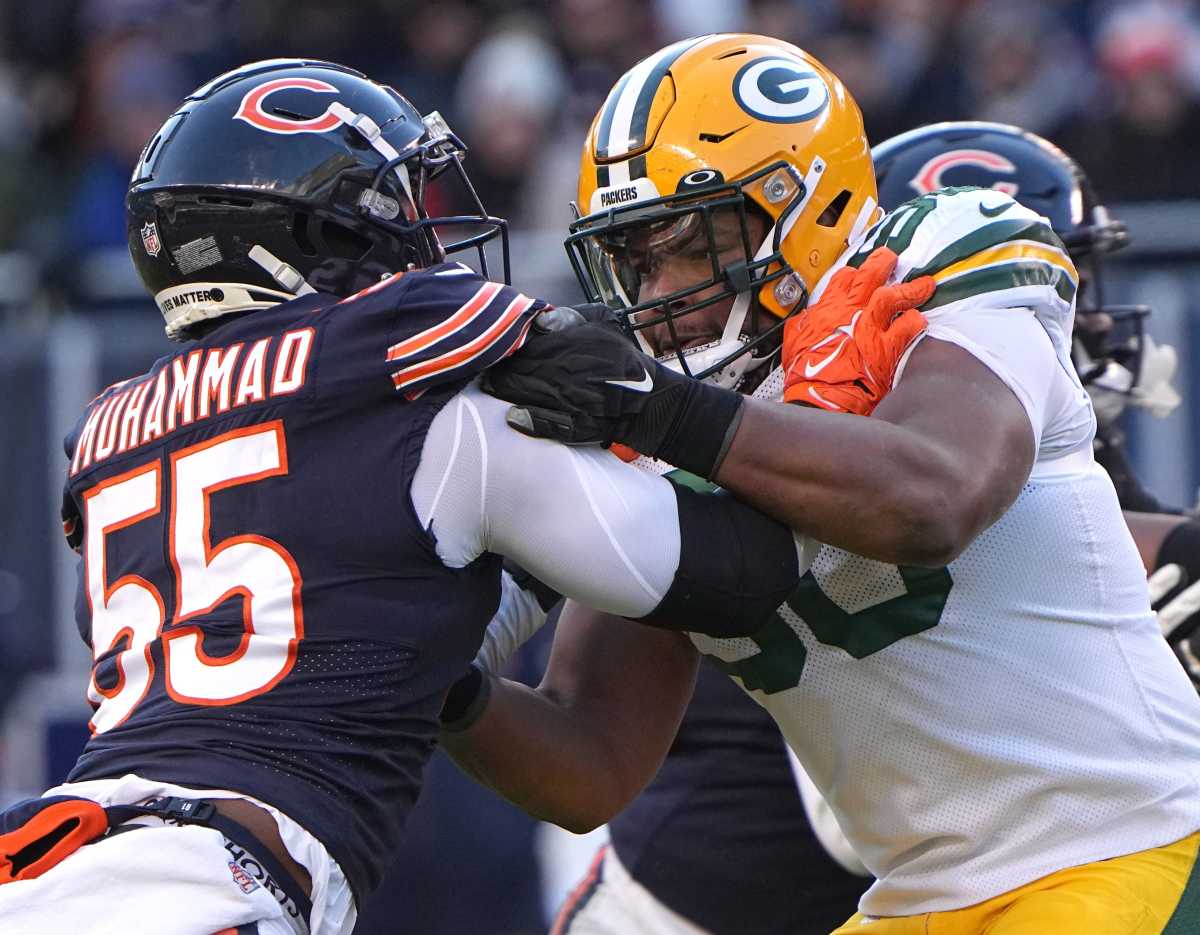
Where would the Packers have been without Zach Tom? He started games at left tackle and left guard and got considerable playing time at right tackle, as well. No matter the position, no matter who had to block, no matter the location, he was up to the task.
Tom played 489 snaps, making him one of 22 rookie linemen to play 300-plus snaps, regardless of position. Tom gave up one sack and 12 pressures, earning the No. 1 spot in PFF’s pass-blocking efficiency among the rookies. He was not penalized.
He’s a bit small to be an offensive tackle and a bit underpowered to be a guard or center. In the long run, offensive coordinator Adam Stenavich thought Tom’s best spot would be on the interior. Given an offseason of strength training, he should be ready to challenge for a starting job next summer.
Fifth round: Kingsley Enagbare
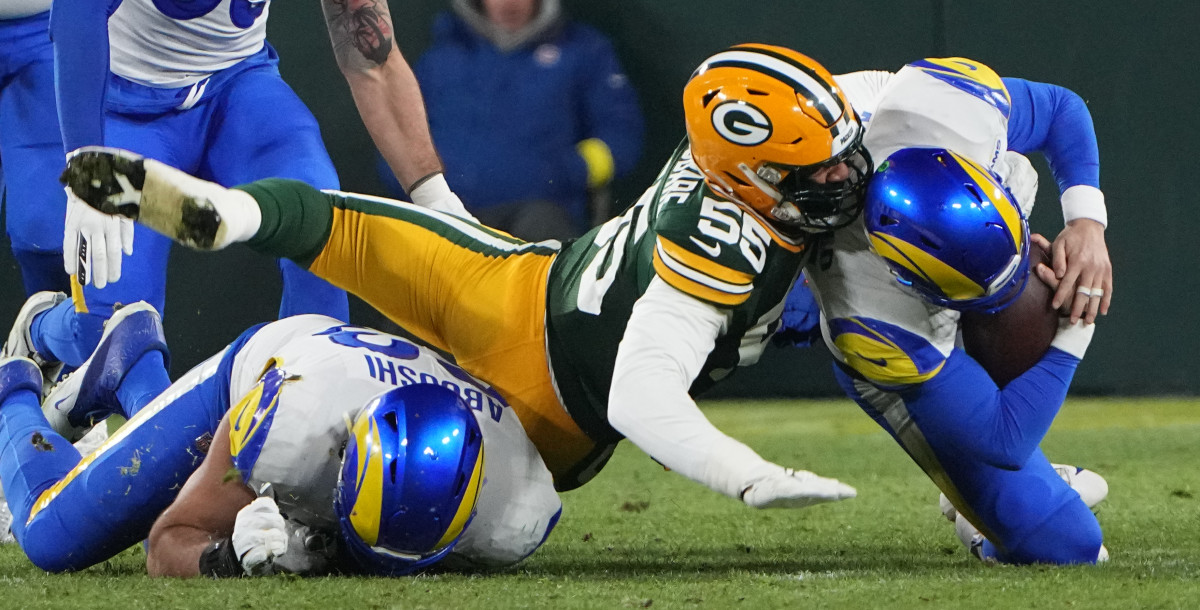
Kingsley Enagbare looked nothing like that player who flirted with 5.0-second times in the 40-yard dash during his predraft testing, results that pushed him all the way to the 179th overall selection.
With a solid training camp, Enagbare emerged as the winner in the wide-open battle to be the top backup at outside linebacker. When Rashan Gary went down with his torn ACL, Enagbare moved into the starting lineup.
Of the 56 defenders selected during the final three rounds, Enagbare was second with three sacks, fifth with seven starts and eighth with 465 snaps. Was he great? No. But he contributed 31 tackles, including five for losses. He was fifth on the team with eight quarterback hits and led the team’s outside linebackers and defensive linemen with three passes defensed.
Seventh round: Tariq Carpenter
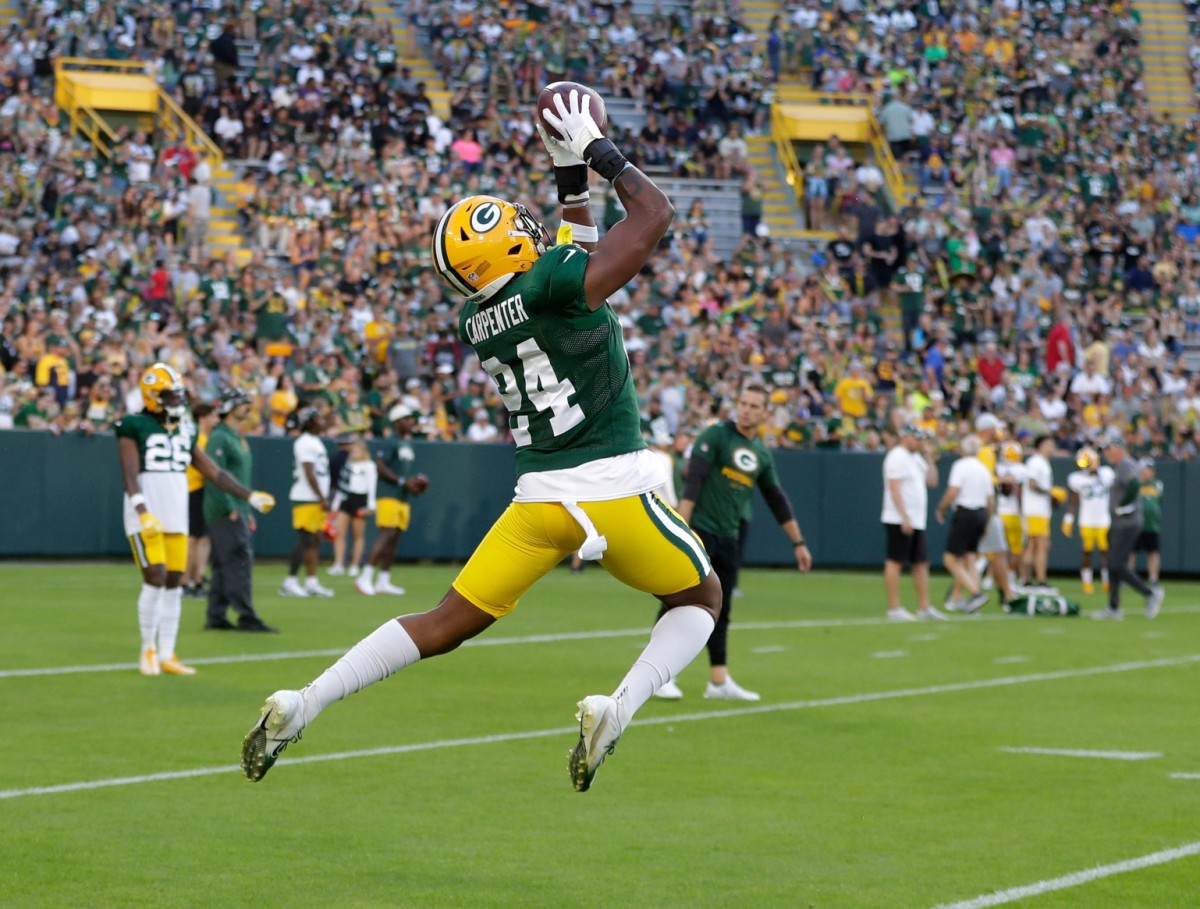
Tariq Carpenter was drafted 228th overall. With safety speed and linebacker size, Carpenter was the personification of the nonsense that can be rookie-season hype. Could he win the sixth-DB spot? Please. He couldn't even get on the field, let alone earn a prized spot in the rotation.
Not that Carpenter was bad or this was a wasted pick. Indeed, while Carpenter was a total nonfactor on defense – he worked with the outside linebackers during at least one late-season practice – he really blossomed into a standout on special teams. He finished sixth on the team with eight tackles on the coverage units. All eight came during the second half of the season. If nothing else, he should be a top dog in the kicking game next year.
Seventh round: Jonathan Ford

The 234th overall selection, Ford was given a roster spot based on draft status and long-term potential and nothing he did on the practice field or preseason. He was a healthy inactive for all 17 games. Even when veteran Dean Lowry went on injured reserve and missed the final two games, the Packers opted to go short-handed on the line rather than give Ford a chance. This obviously will be a big offseason for Ford to show he's ready to play.
Seventh round: Rasheed Walker

The 249th overall selection, Walker endured a tough training camp. Injuries kept him off the field and offensive line coach Luke Butkus was Walker’s harshest critic when he did practice. He made the roster on the strength of an excellent preseason finale, then played four snaps on special teams in his lone regular-season appearance. Assuming general manager Brian Gutekunst continues his trend of drafting a lot of linemen, Walker will be fighting for his job next summer.
Seventh round: Samori Toure

The 258th of 262 draft picks, Toure looked like he could be a second-half-of-the-season factor when he hauled in a 37-yard touchdown at Buffalo in Week 8 and made an acrobatic, tumbling catch during Green Bay’s frantic rally at Detroit in Week 9. But he was thrown just one pass, a 7-yard catch at Chicago, in 51 snaps the rest of the season. Not even the last-season dumping of Sammy Watkins could get the former “Capt. Casual” on the field.
Toure finished the season with five receptions (10 targets) for 82 yards and one touchdown in 112 snaps. Toure was the last of nine receivers selected during the final three rounds. He was tied for fourth in catches, fourth in yards and tied for first in touchdowns.
-6269900502a1e0ca581b6c34076450d4.jpg)